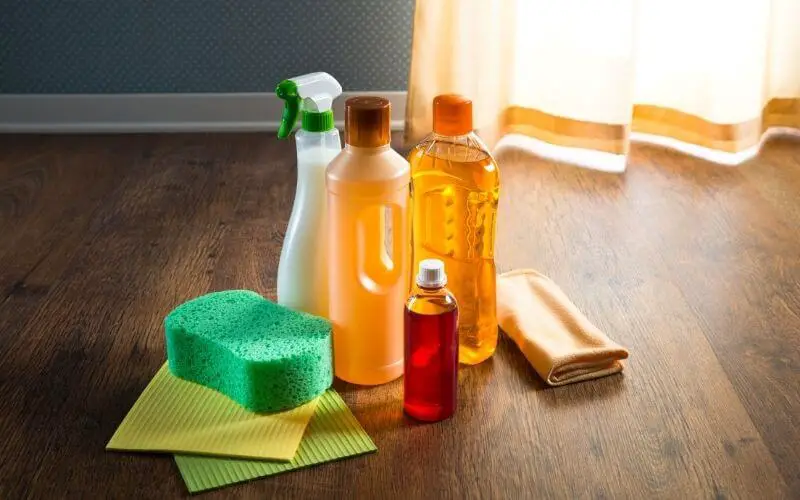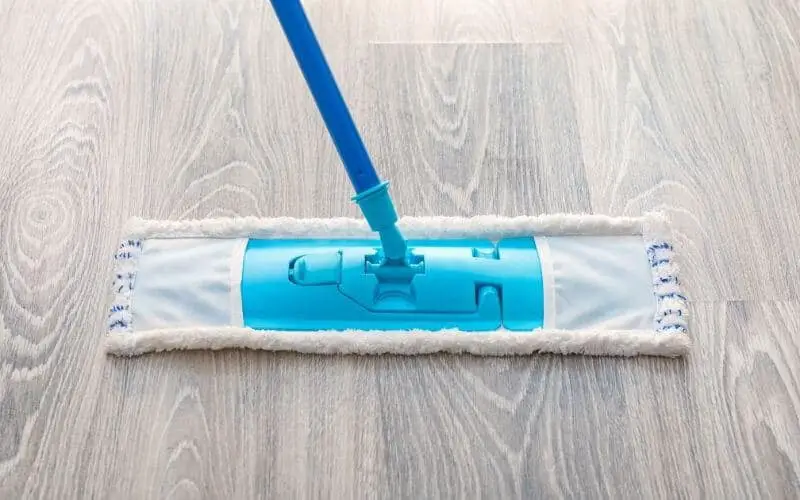If your wood floor is beginning to smell musty, a number of culprits could be responsible. Musty smell can be caused by poor ventilation, excess moisture, lack of sunlight or an odor that has been left unattended for a long time.
To keep musty odor off your home and deodorize wood floor, you can carry out certain procedures and get your floor Smelling fresh.
Our favorite method of getting smell out of hardwood floor is by using a vinegar solution or hydrogen peroxide solution. Both of these methods work like magic.
Most methods used to deodorize wood floor also disinfects the floor, killing any odor-causing bacteria.
Read: How to get alcohol smell on floor
How to Deodorize Wood Floor
Table of Contents
Using A Vinegar Solution
If your wood floor has a terrible odor due to pet urine, a simple and effective way to get rid of it is by using vinegar. Vinegar is a natural disinfectant and deodorant which is super effective in removing odors from the floors.
To make this simple cleaning solution, combine a cup of white vinegar with some warm water in a bucket. Mop the floor with the solution, and you should be able to notice an immediate decrease in the odor.
To make the solution even more effective, add a few drops of grapefruit oil to the bucket of warm water and white vinegar. This solution not only eliminates the odor, it replaces it with a soothing fragrance and also lift stains.
Vinegar solution should, however, be used sparingly as it can weaken the sealant on your floors, do not allow the solution to sit on the floor for too long.
Read: How to clean bamboo floors with vinegar
Baking Soda
Baking soda, which you probably have in your pantry, is another effective solution for eliminating odors and deodorizing wood floors. Baking soda pulls out stains and odors from the floors, and the application procedure is fairly simple.
Simply sprinkle a generous amount of baking soda on the floor and allow it to sit for about two to three hours before mopping the floors with the vinegar solution discussed above.
For extra effectiveness, you can add a cup of baking soda to the vinegar solution. You can also sprinkle the baking soda on the floors and allow it to sit overnight before sweeping it up.
Baking soda, however, also poses the risk of damage as it can penetrate the wood and lighten the wood grain of thinly sealed wood flooring, so do well to consider the risk and how to keep it to the barest minimum when resorting to this method.
Hydrogen Peroxide Solution
Hydrogen peroxide is another effective pet odor removal solution that is suitable for use on a hardwood floor. You can simply apply it to the affected area with a cleaning rag saturated with the product and allow the floor to dry thoroughly.
You should notice an immediate reduction in odor as well as cleared up stains on the floor. You can also apply hydrogen peroxide by placing rags soaked with the product over the affected spots and allow them to sit there till they dry out.
Like most other cleaning chemicals, hydrogen peroxide should be used with caution as hydrogen peroxide can bleach your beautiful hardwood floor.
If you accidentally bleached your floor while trying to deodorize your wood floor or eliminate a musty smell, it can be fixed by treating the wood once again. But, you might want to consult a professional for tips, and if possible allow them to handle the job, they’ll achieve a better result.
Also, before handling hydrogen peroxide, certain precautionary measures have to be taken. You’ll need a couple of safety gear, including a mask, gloves, and safety goggles.
The working area should also be well-ventilated. Keep windows and doors open to let in fresh air as you work; this ensures you do not choke or experience any respiratory issues as you work because some chemical fumes may arise during the cleanup.
Sand The Floors
If you have an unfinished or poorly finished wood floor with pet odor or musty smell, you may need to sand them to get rid of the smell completely.
A disc sander and a drum sander can be used to sand solid hardwood floors; a disc sander is best suited for engineered wood floors. If your wood layer is too thin for deep sanding, you can lightly sand the top layer of the wood.
Keep your pets from the area as you sand. The dust generated during the sanding process is dangerous for them, and the last thing you want is them peeing on the floor before you can reseal them after sanding.
Before you begin sanding, determine if your floor needs deep or light sanding. For light sanding, use a vibrating floor sander or floor disk sander.
You will need a drum sander for deeper sanding. An edge sander may also be needed for the baseboards and trim. All of these tools can be rented at your local hardware shop, or you can decide to buy your own.
With your tools assembled, begin taping up plastic sheeting on every exit the dust might escape through. This includes the doors, windows and vents.
Prep the floor for sanding by removing the quarter-road and the baseboards. If you have painted baseboards, you can leave them on but try to work around them as you sand and get as close as possible to them without causing damage.
Begin sanding the floors, and you might need to exercise extra patience when using a drum sander and avoid pressing it down as you sand as that could leave gouge marks on the floor, damaging it. Also, remember to always keep the sander moving and never leave it in place while it runs.
When you are done sanding, sweep the floors and mop the floors twice, using a different mop head each time.
Allow the wood floor to dry completely, and you can go ahead and apply a floor finish. Your floor should not only be free from smell but should also look brand new.
Read: How to get rid of beer smell on floor
Conclusion
These are ways to deodorize wood floor, from using household items like vinegar and baking soda to more laborious methods like sanding. Opt for the method that suits your situation the most and get your floor smelling fresh again.

